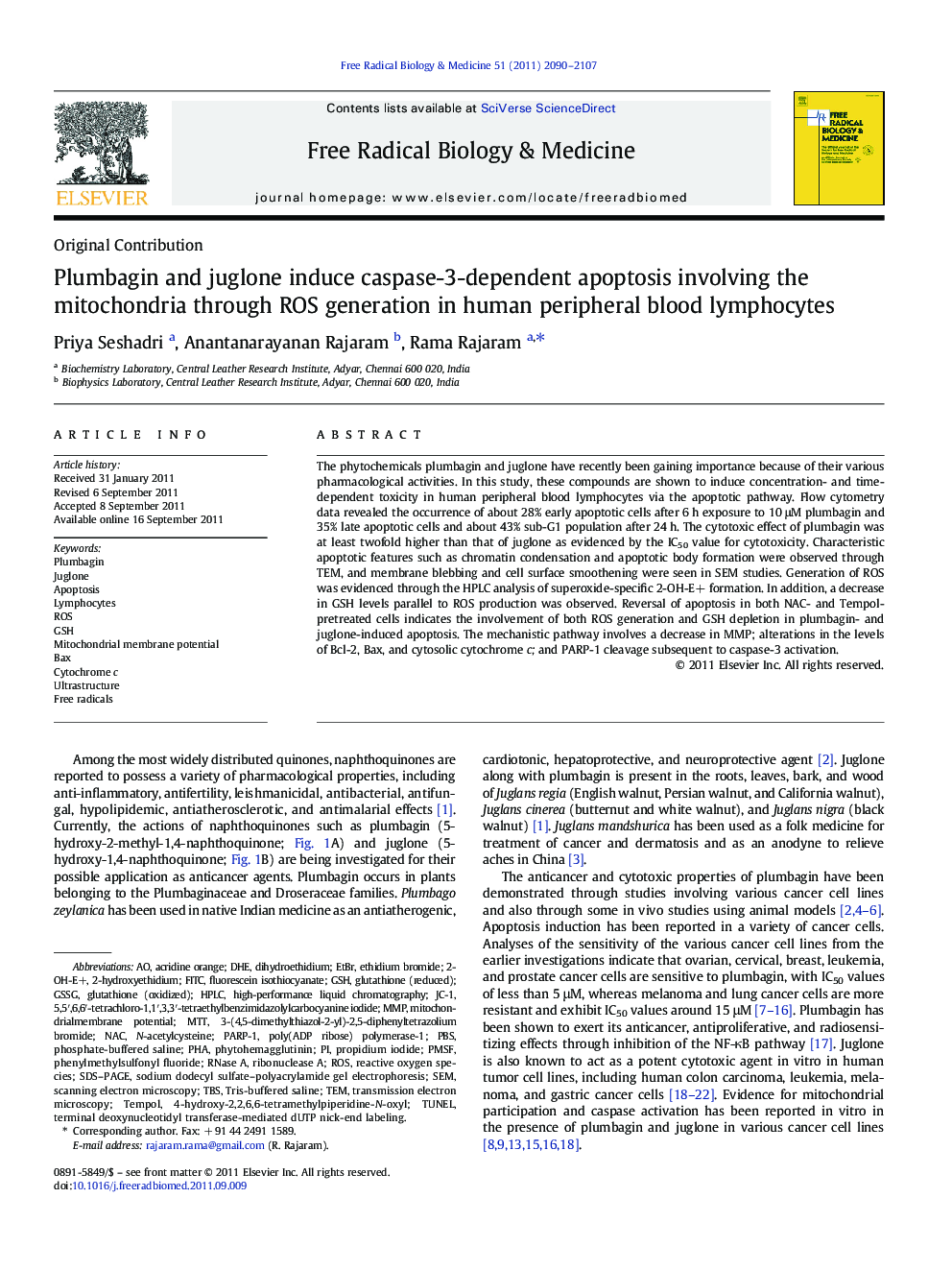| Article ID | Journal | Published Year | Pages | File Type |
|---|---|---|---|---|
| 1908918 | Free Radical Biology and Medicine | 2011 | 18 Pages |
The phytochemicals plumbagin and juglone have recently been gaining importance because of their various pharmacological activities. In this study, these compounds are shown to induce concentration- and time-dependent toxicity in human peripheral blood lymphocytes via the apoptotic pathway. Flow cytometry data revealed the occurrence of about 28% early apoptotic cells after 6 h exposure to 10 μM plumbagin and 35% late apoptotic cells and about 43% sub-G1 population after 24 h. The cytotoxic effect of plumbagin was at least twofold higher than that of juglone as evidenced by the IC50 value for cytotoxicity. Characteristic apoptotic features such as chromatin condensation and apoptotic body formation were observed through TEM, and membrane blebbing and cell surface smoothening were seen in SEM studies. Generation of ROS was evidenced through the HPLC analysis of superoxide-specific 2-OH-E+ formation. In addition, a decrease in GSH levels parallel to ROS production was observed. Reversal of apoptosis in both NAC- and Tempol-pretreated cells indicates the involvement of both ROS generation and GSH depletion in plumbagin- and juglone-induced apoptosis. The mechanistic pathway involves a decrease in MMP; alterations in the levels of Bcl-2, Bax, and cytosolic cytochrome c; and PARP-1 cleavage subsequent to caspase-3 activation.
Graphical abstractFigure optionsDownload full-size imageDownload high-quality image (391 K)Download as PowerPoint slideHighlights► Plumbagin and juglone induce apoptosis in human peripheral blood lymphocytes. ► Apoptotic morphology observed through optical, fluorescent and electron microscopies. ► ROS generation confirmed by superoxide specific 2-OH-E+ formation through HPLC. ► Alterations of Bcl-2,Bax and cytochrome c levels indicate mitochondrial involvement. ► Reversal of apoptosis observed in both NAC and Tempol pretreated cells.
